The Land Rover Defender is tough; that's no secret. But is it tough enough to, at 27 years old, drive through the jungle of the Congo?
It could be a stand-up comedian’s joke: did you hear the one about the army officer, the photographer and the doctor who drove a 27-year-old Land Rover to Africa and through the jungle of the Congo? But it’s no joke.
Three intrepid explorers did exactly that in 2013, taking four months to drive to Kinshasa, capital of the Democratic Republic of Congo (DRC) and then two months to cover 2500 miles of jungle hell. All in a very basically prepared D-reg Land Rover 90 bought off eBay for £2700.
“We never intended to cross the Congo, but conflicts in north Africa cut off options to loop back to the UK,” says Mike Martin, who tackled the trip with fiancé Chloe Baker and photographer Charlie Hatch-Barnwell. “We knew it would be difficult, but it was there to be done.”
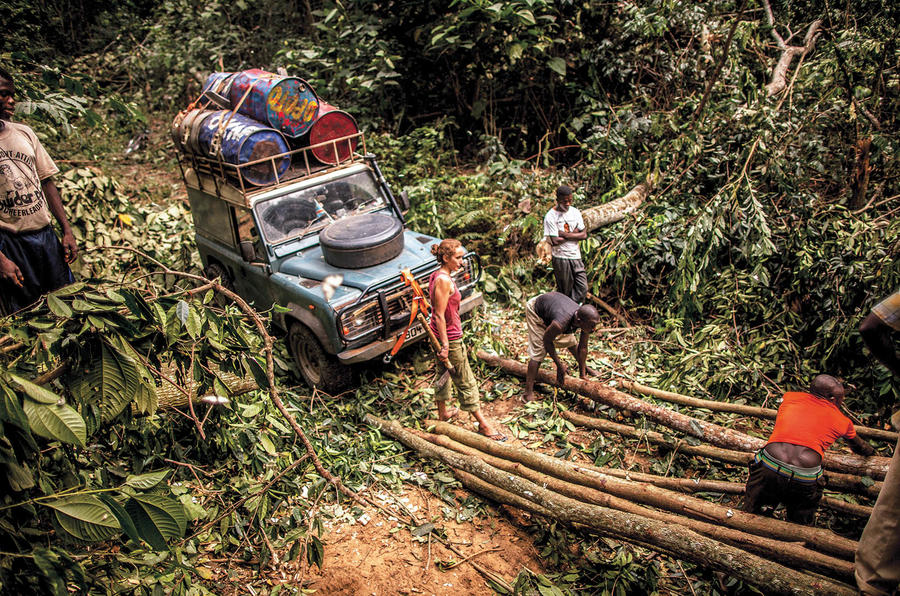
Driving the DRC is a mammoth challenge, because its infrastructure is shot to pieces – literally. Border wars and civil conflict have left it with a legacy of blown-up bridges and rain-lashed mud roads churned up by trucks. Martin reckons that no explorer has traversed the entire country by road from south to north for decades, if ever, since the 1960s.
The new Defender is due in 2019 - read more
Martin is worldly wise and full of energy. A five-year stint in the British Army included two in Helmand Province in Afghanistan, working in intelligence. He doesn’t come across as gung-ho, more ‘let’s get this done yesterday’, which is how he was able to buy, repair and equip the Land Rover in just two months.
The trip had to be squeezed into six months, wrapping up in August 2013 so Baker could start a new NHS assignment. Her medical skills were to prove vital to the expedition.
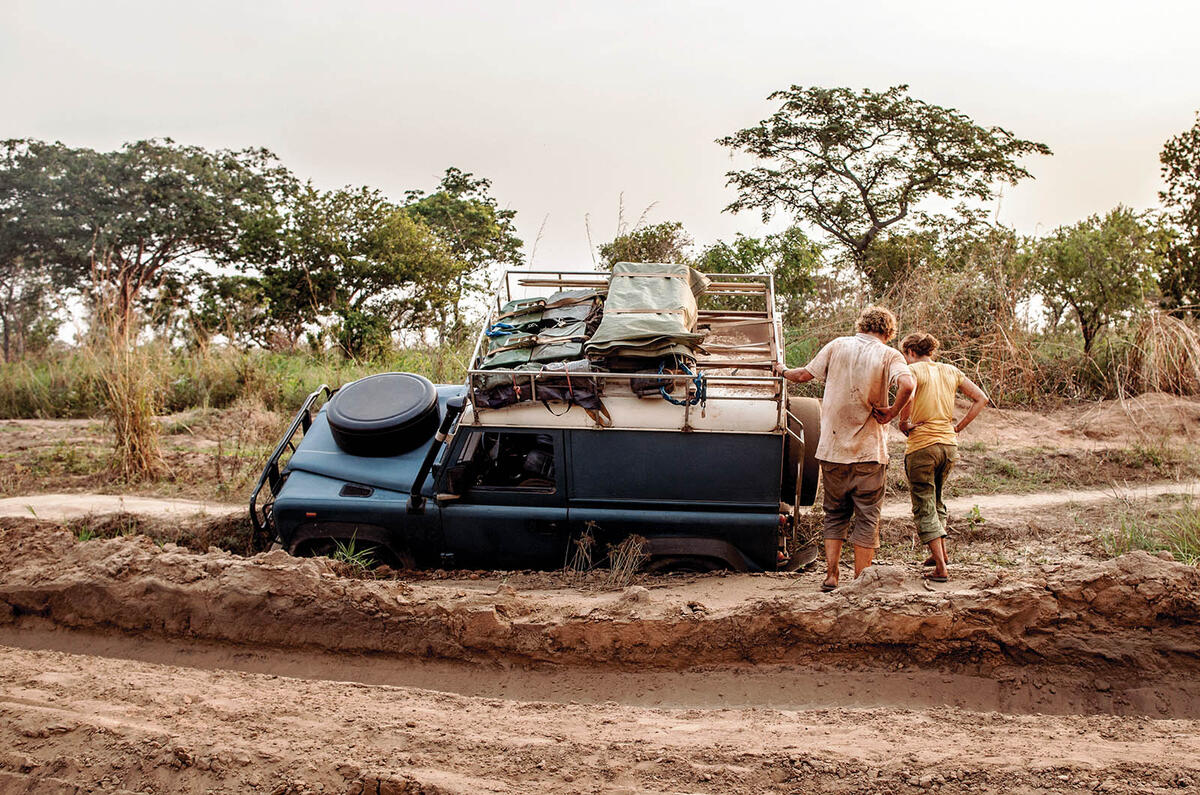
Tackling the challenge head on, Martin looked at eBay, found a Land Rover in his budget and bought the pretty beaten-up Land Rover 90, usefully fitted with a roof rack, bull bars and a raised air intake. When the dishevelled vehicle arrived, it was immediately dubbed 9Bob, as in ‘bent as a nine bob note’.
“I wanted as basic and simple a Land Rover as possible,” says Martin. “With a tight budget, I went with what was available, thinking that most of it would need fixing anyway.”
Watch the Defender take on the Atlantic Ocean
This is where the Congo expedition diverges from the norm. Instead of months of expensive preparation and an equipment list as long as your arm, Martin had two months to make 9Bob roadworthy and fit it out with essential, cost-effective equipment.
Making up for a lack of mechanical experience, he acquired a Haynes manual, sought advice from internet forums and fired up his enthusiasm to overhaul 9Bob’s engine, electrics and brakes, replace the clutch master cylinder and fit Koni dampers. A major job was completing a left-hand drive conversion. “I figured that if I wanted to be an adventurer, I needed to acquire the mechanical skills,” he says.
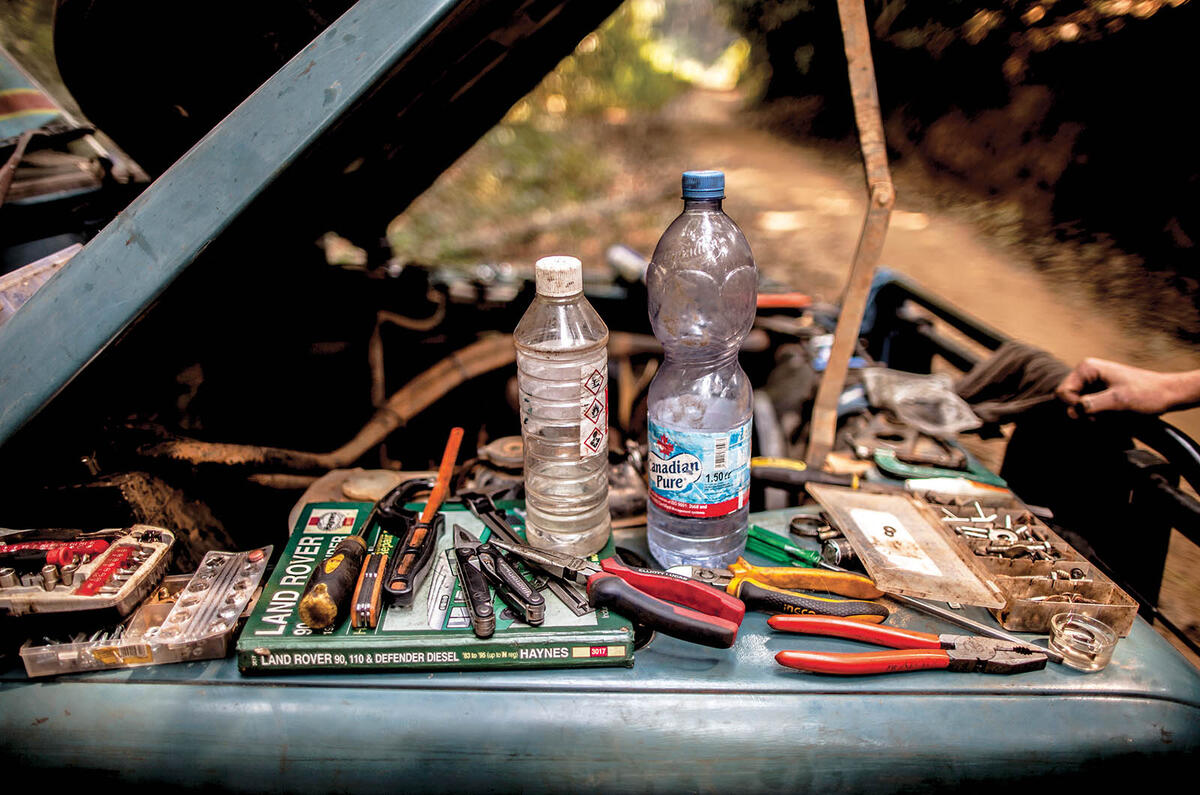
The seats were left in standard, three-perch configuration, reserving the load bay for gear. A pair of ‘Laycorn’ boxes – heavy-duty army storage – was used for spares and tools, with further money saved by choosing a manual winch over a powered one. “We could use it at the front or rear,” says Martin.
Other kit included a pair of sand ladders, an official Land Rover high-lift jack (which broke) and a fuel/water separator, invaluable for purifying the diesel and transmission fluid usually watered down by unscrupulous Congolese middlemen. Sleeping bags were hung in netting hammocks suspended above the load bay.
Read the Land Rover Defender 90 Heritage review here
A sump guard, spare battery, a set of new BF Goodrich tyres and a tyre inflator completed the fit-out. “The tyres were brilliant,” says Martin. “They hardly looked worn at the end of the trip and we only had one puncture. Unbelievable.”
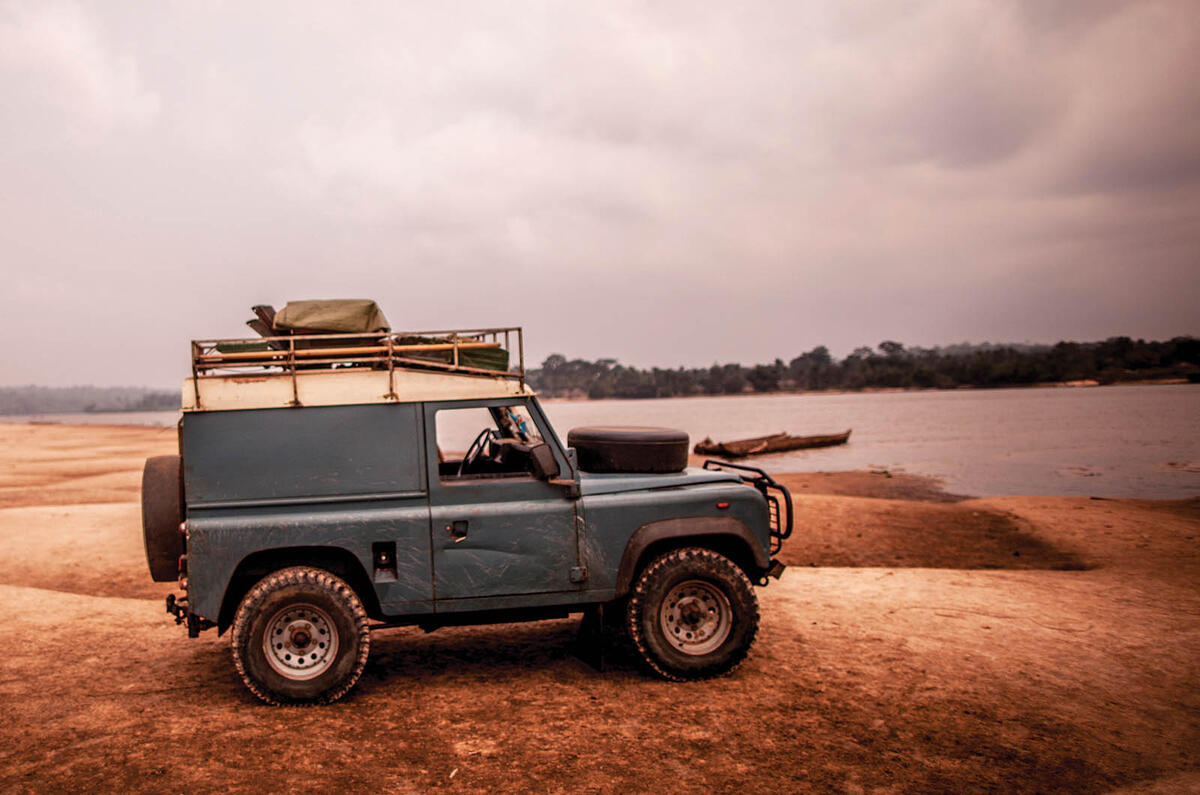
Given the struggle their jungle adventure represented, it isn’t surprising that Martin and his co-travellers have written a book about it. Their account is raw: impassable roads, obstructive officials in every town, a car that breaks frequently and takes days to fix, hostile crowds, biting ants, frequent chopping of undergrowth and endless tins of sardines. But there’s also humanity, from churches where they sought overnight refuge, or from locals who hunted down spares and extended hospitality.
The expedition started in late May 2013 from Kinshasa, when photographer Charlie Hatch-Barnwell flew in. His arrival was also a chance to pack his luggage with a new clutch, which had conked on the drive to the DRC. Martin and Baker, of course, had already been on the road for four months through Europe and north and west Africa.
We helped build the 2,000,000th Defender - read more here
Progress out of Kinshasa was brisk at first, with 232 miles – almost a tenth of the total 2500-mile trip – completed in one day early on.
But as the roads deteriorated to rutted mud with huge potholes, just tens of miles could be covered in a day. Grimly, the jungle road was used as a toilet by locals, as Martin graphically describes: “To make it worse, 9Bob began to stink as human excrement was flicked up against it.”
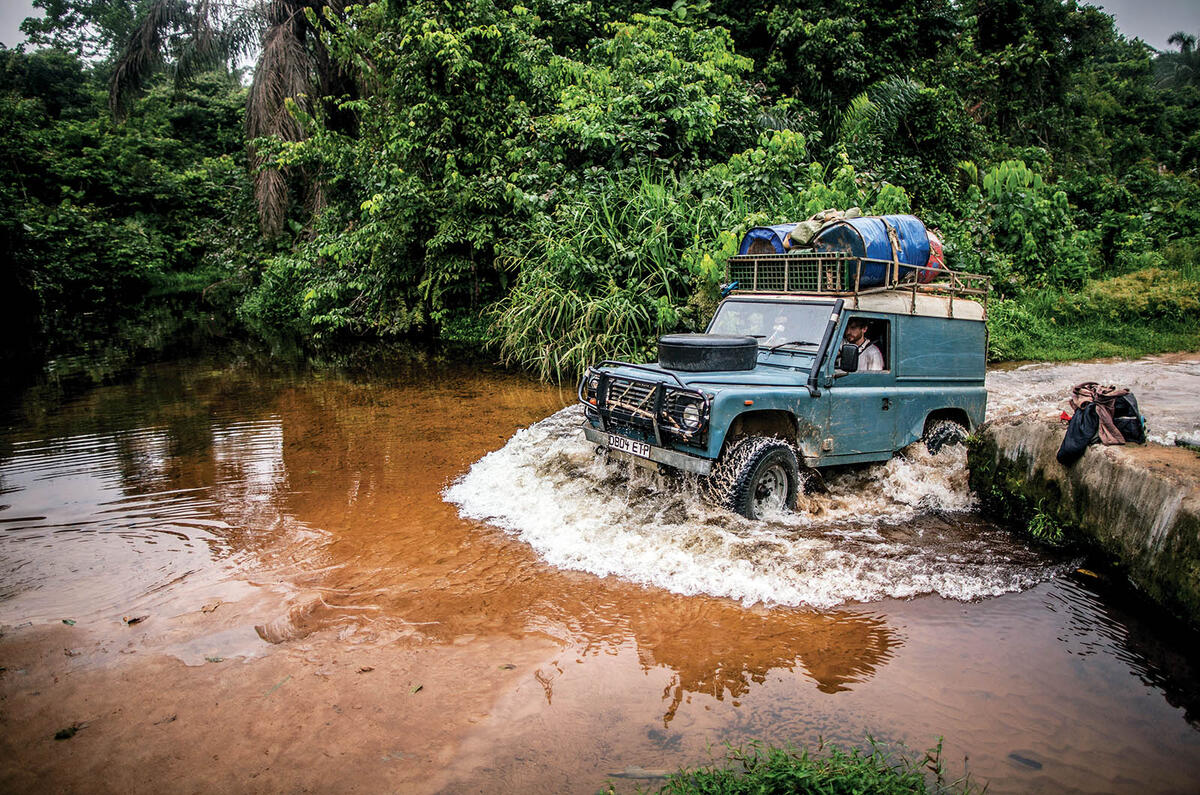
Twenty days into the 60-day trip, the steering box ate one of its gears, requiring a five-day halt as Martin searched for spares in a nearby town. Salvation came in the form of a Landie abandoned by an aid agency, yielding a replacement bartered down to $650.
Read our Land Rover Defender review here
Around this point, their supply of gin dried up, then a broken relationship was the next thunderbolt to hit, when Martin decided to call off his engagement to Baker, although the two remained sufficiently friendly to co-author the book. But the tension surfaces in their account.
More obstacles were to come, namely two bridges down across the N’Djili river, reached after 36 days. Crossing the first required a makeshift bridge fashioned from local trees, while the second crossing was achieved with a home-built raft, an idea from a local engineer they befriended. That’s why 9Bob is pictured with six oil drums on its roof; they’re flotation for the raft.
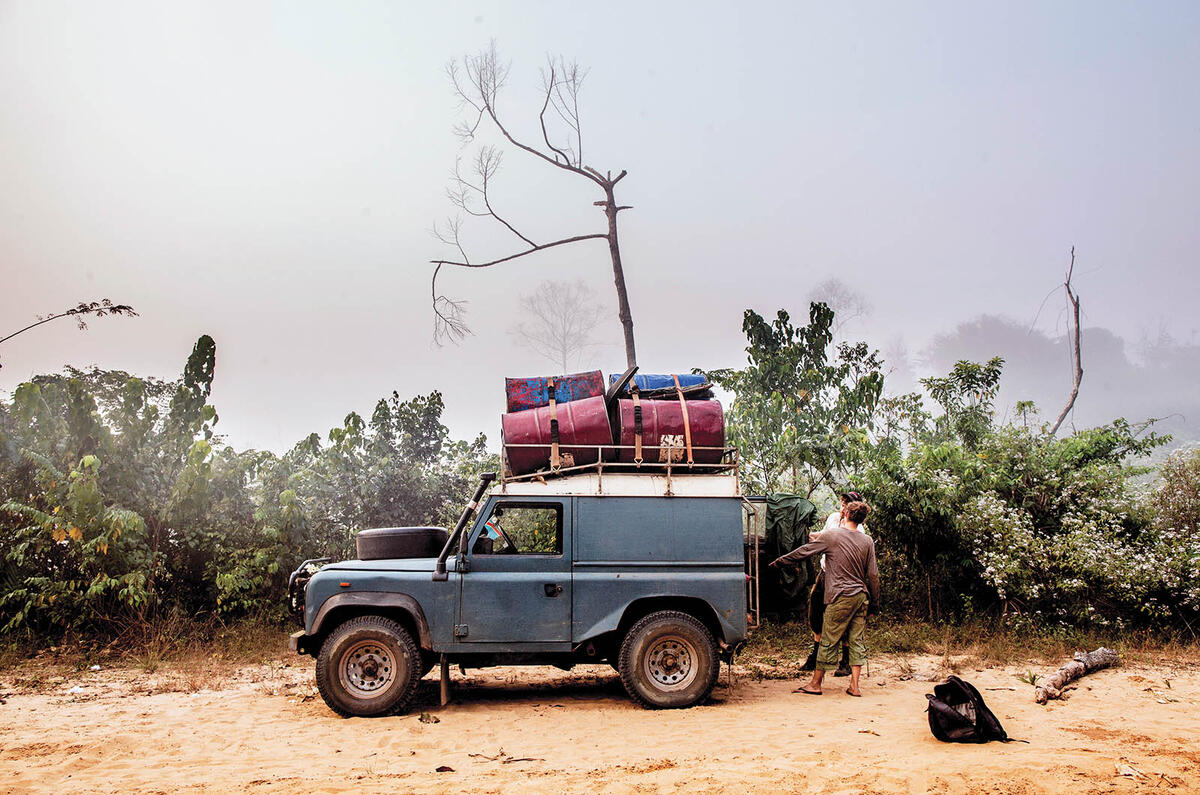
Progress did speed up, but only after multiple small bridges were repaired with cut-down saplings and branches. This prompted another catastrophe when Hatch-Barnwell swung an axe into his foot, requiring all the skills of trained doctor Baker to stitch him up. Strong painkillers kept him going, but he couldn’t help with heavy lugging or driving for days.
Forty-seven days after leaving Kinshasa, the expedition finally reached Kisangani, a port on the Congo river that concluded the jungle crossing. With the final 800-mile leg to Sudan ahead, Martin took the opportunity to overhaul the Land Rover, which was falling apart.
Meet Mr Land Rover Defender himself
Martin admits to be being exhausted by the continual battle to keep 9Bob running but also praises the 27-year-old 4x4’s doggedness and ease of repair. And remarkably, it completed one of the most challenging road expeditions ever.
The final leg ventured through rebel country that demanded overnight stops in safe locations, including a UN compound, until the testy border crossing into South Sudan and the end of the Congo adventure. With little chance to draw breath, skirmishing then broke out as the political situation suddenly deteriorated, and in the rush to fly back to the UK, 9Bob was hurriedly sold to a Briton engaged in security work. Martin believes it’s still there and is seriously considering a return to buy back the Landie.
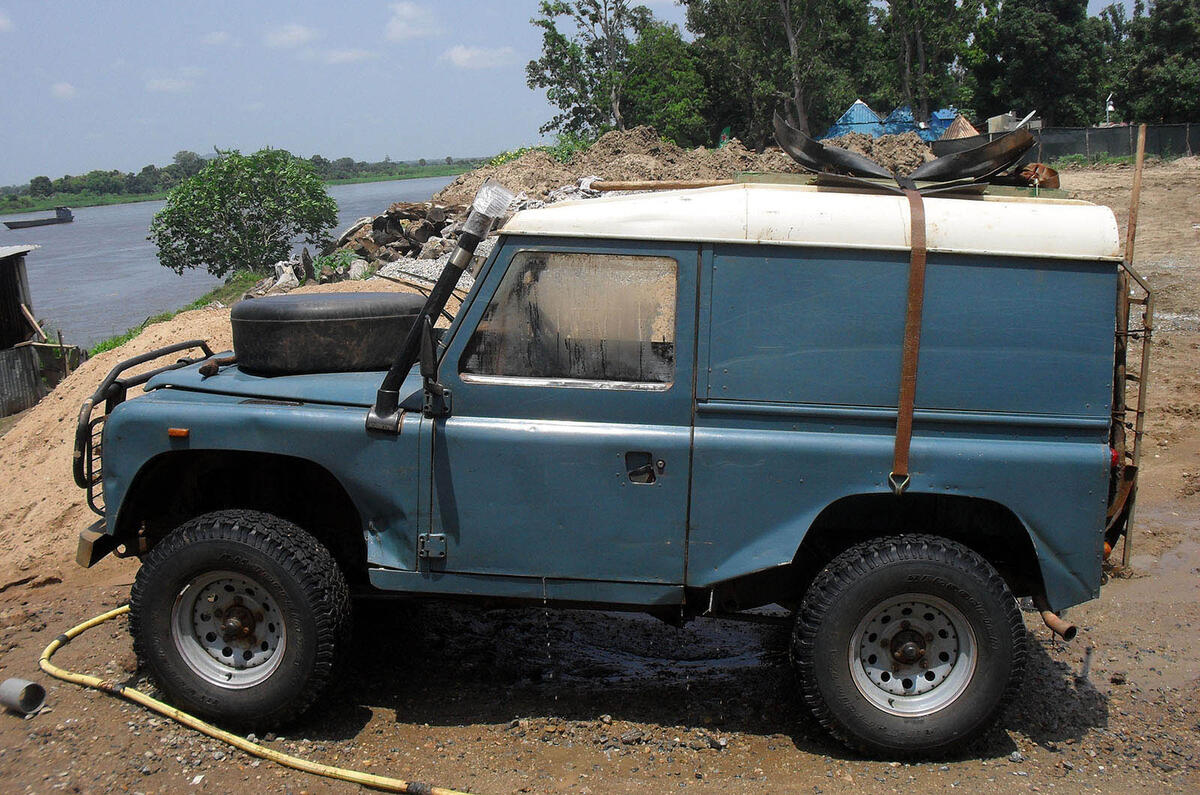
With the benefit of hindsight, would he change anything about the trip? “Nothing different, no,” is his response. “If we’d had more planning time, it wouldn’t have been such an adventure.” Quite.
Crossing the Congo: Over Land and Water in a Hard Place, by Mike Martin, Chloe Baker and Charlie Hatch-Barnwell (Hurst, £20), is published on 8 September.
The expedition route
The expedition took on the rainforest of the Democratic Republic of Congo, the vast land mass at the heart of sub-Saharan Africa that, until independence in 1960, was known as the Belgian Congo before being renamed Zaire in the 1970s.
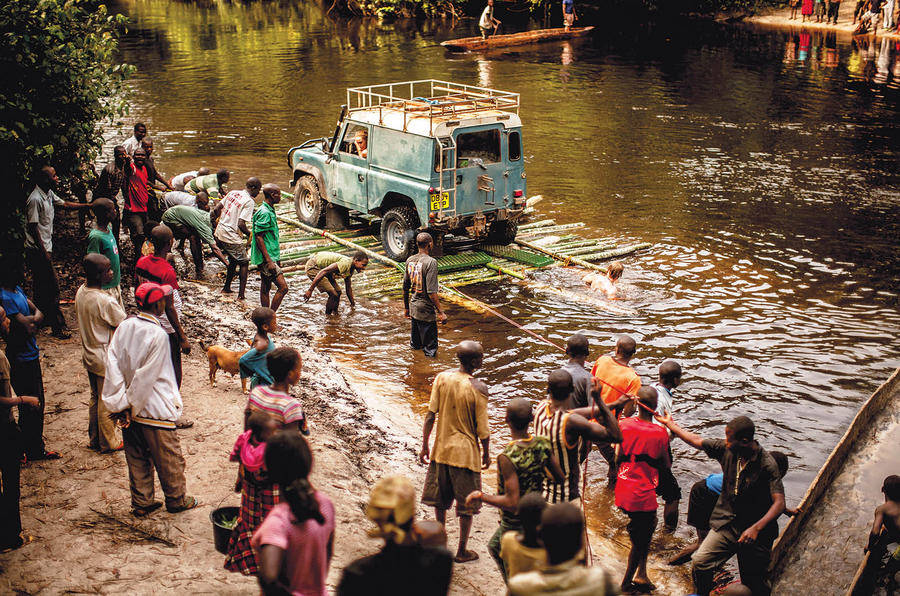
Its rainforest is second only to the Amazon in size and in some areas annual rainfall reaches 2000mm, which is why so many roads are rutted and there are so many rivers.
Raw materials are the DRC’s main export, and many of the wranglings in which the expedition got caught up were linked to diamond and cobalt mining. Locals persistently offered the expedition ‘red mercury’ to buy — a hoax substance purportedly used in the making of nuclear bombs.

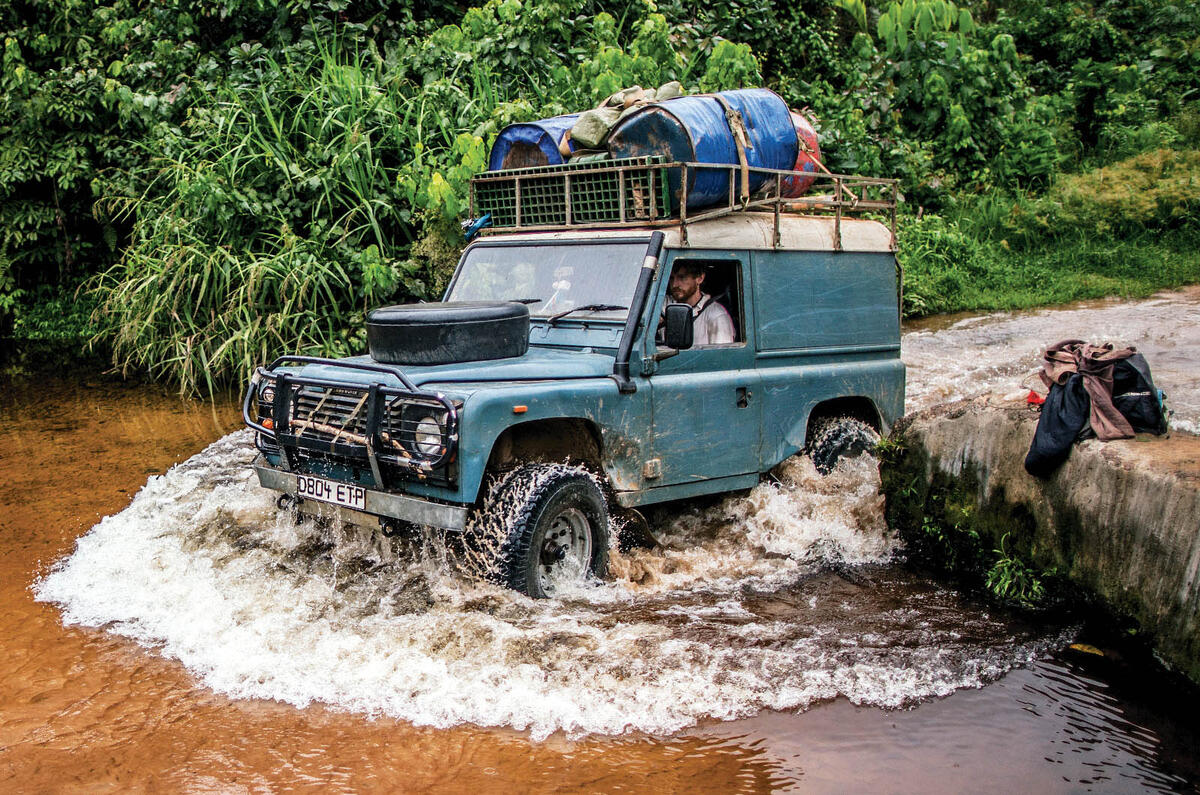
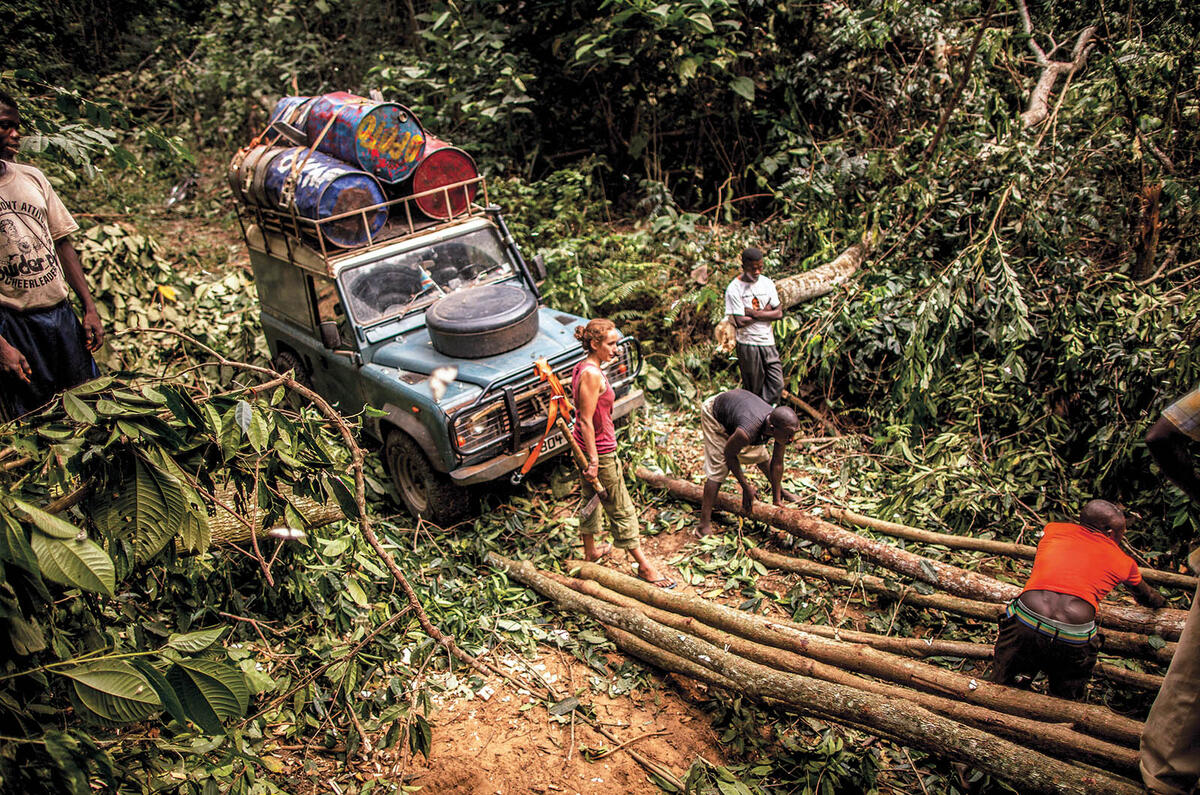
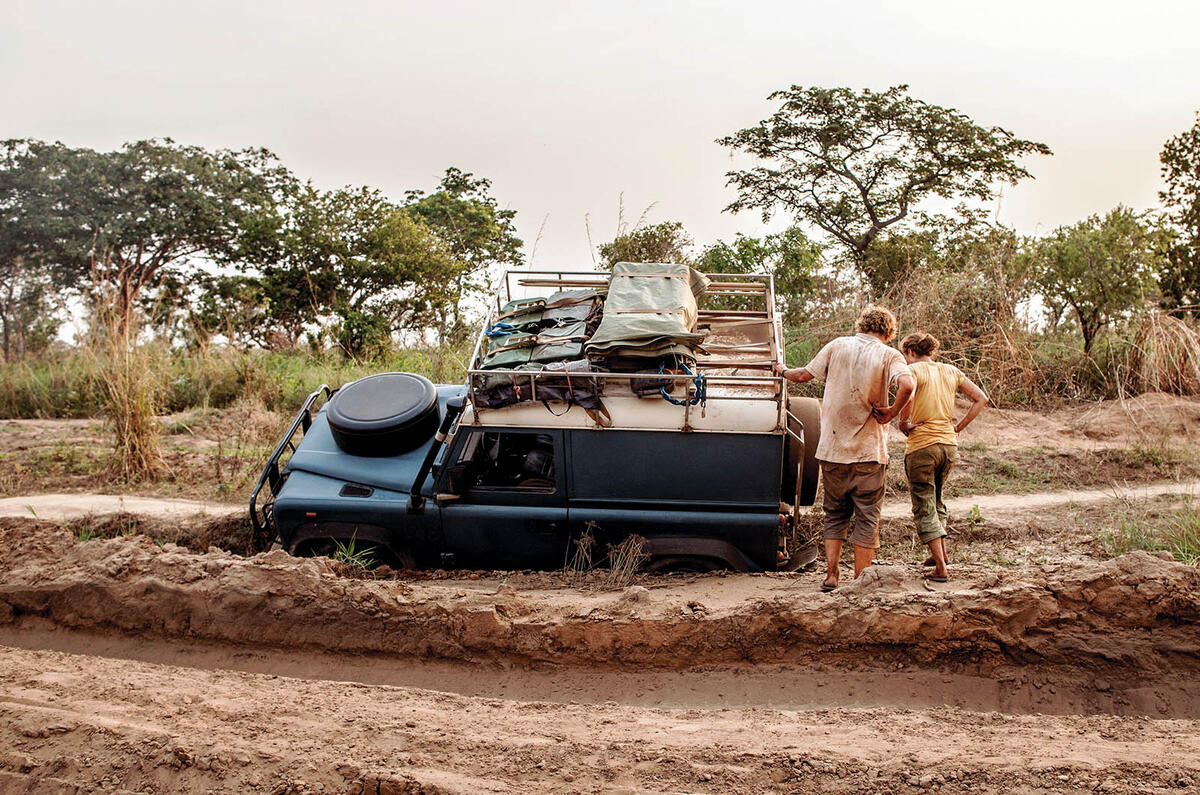
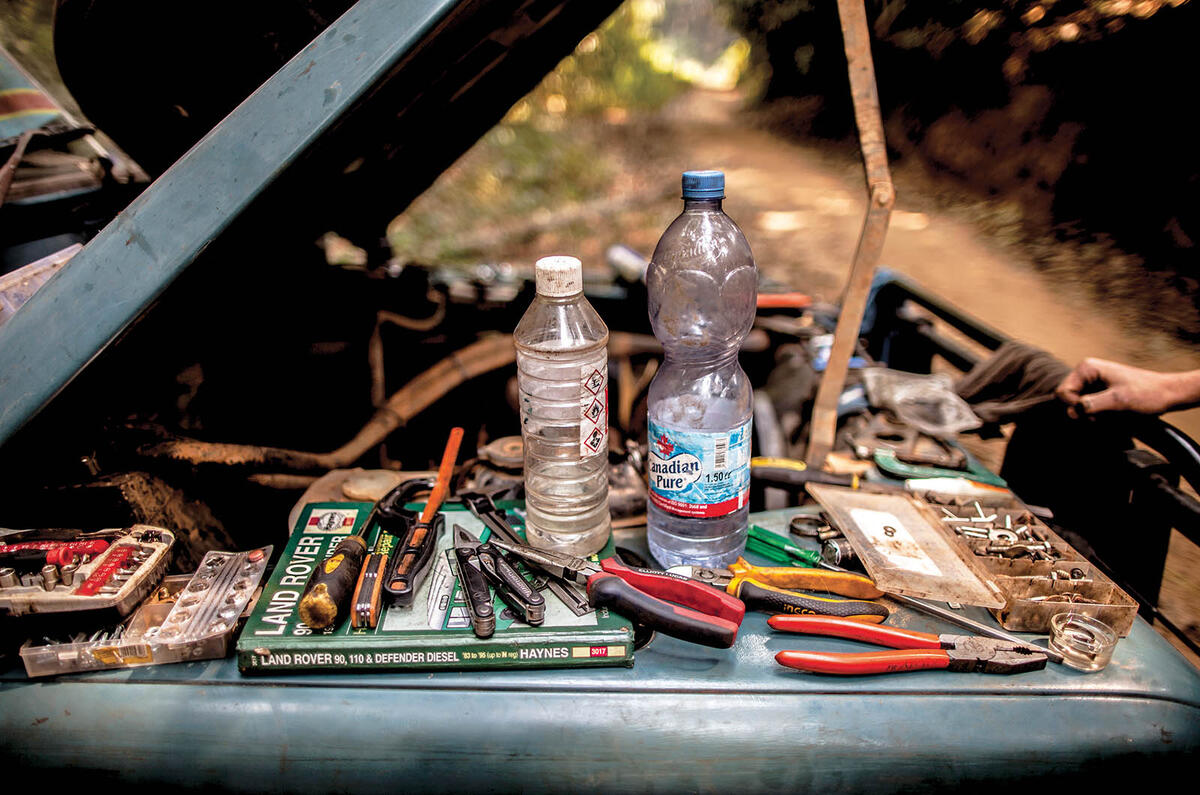
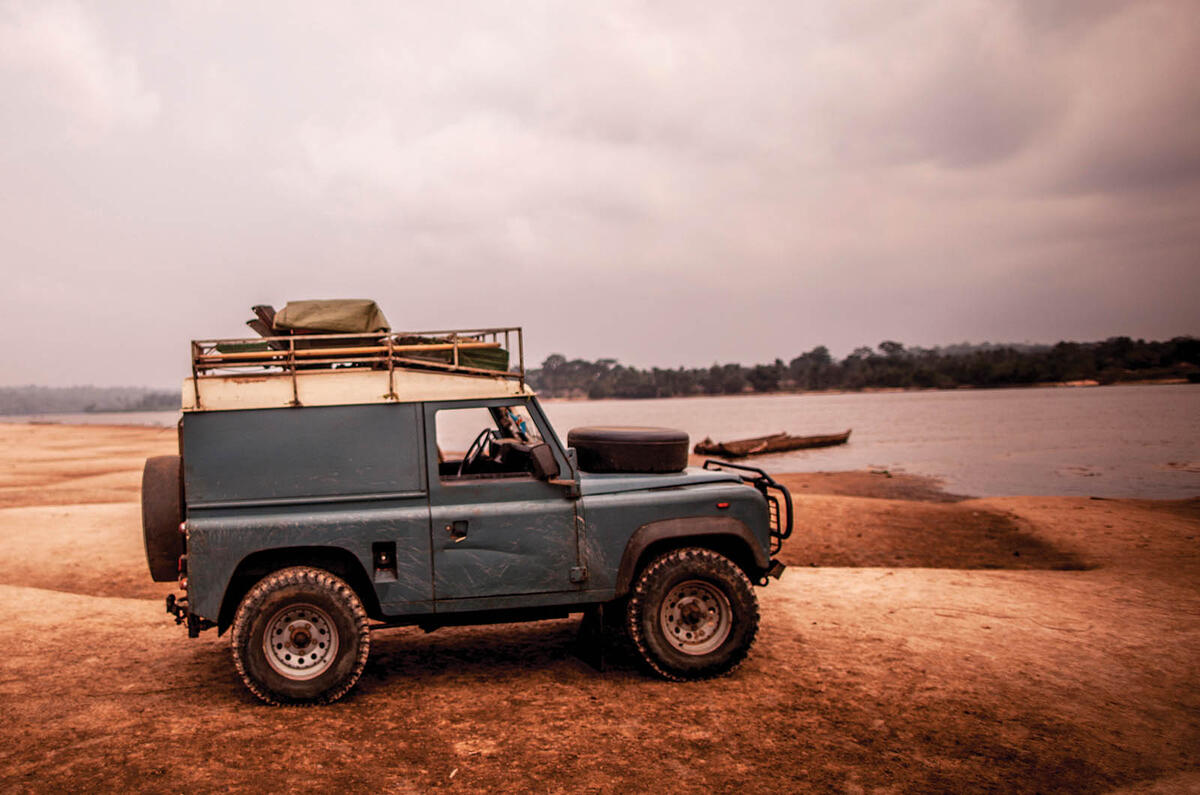
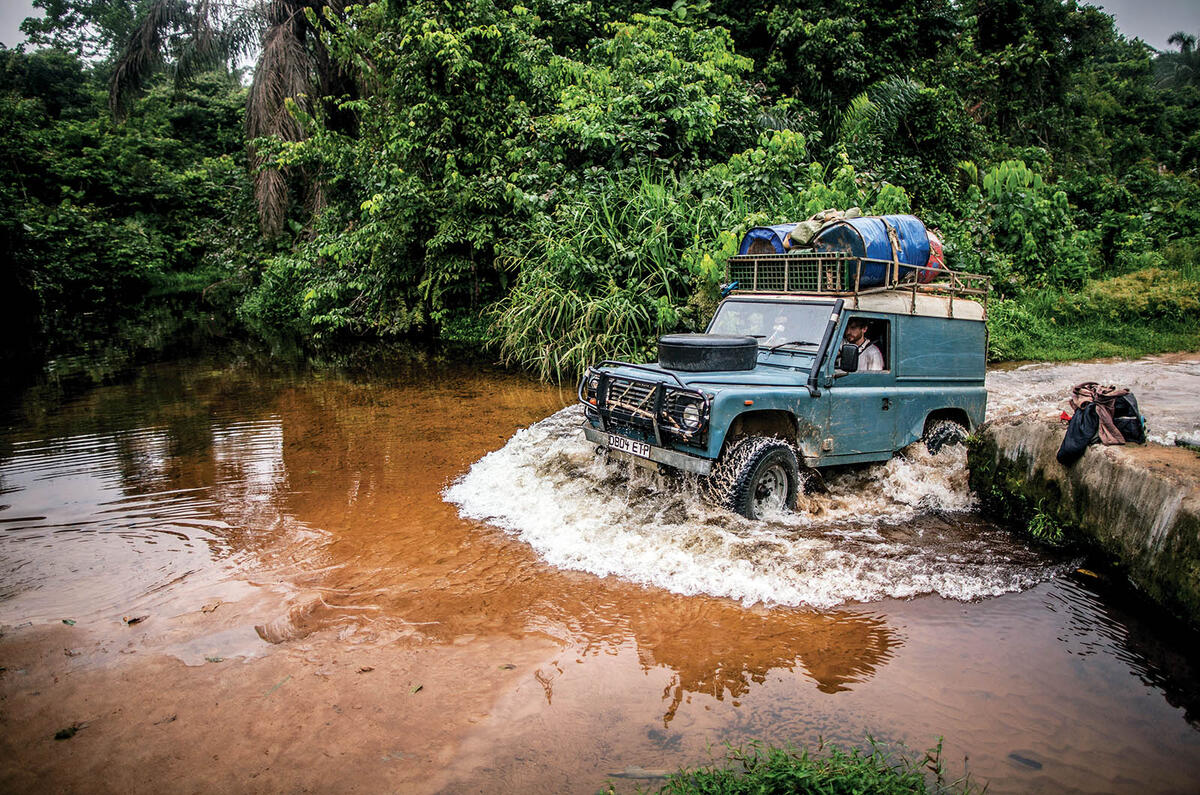
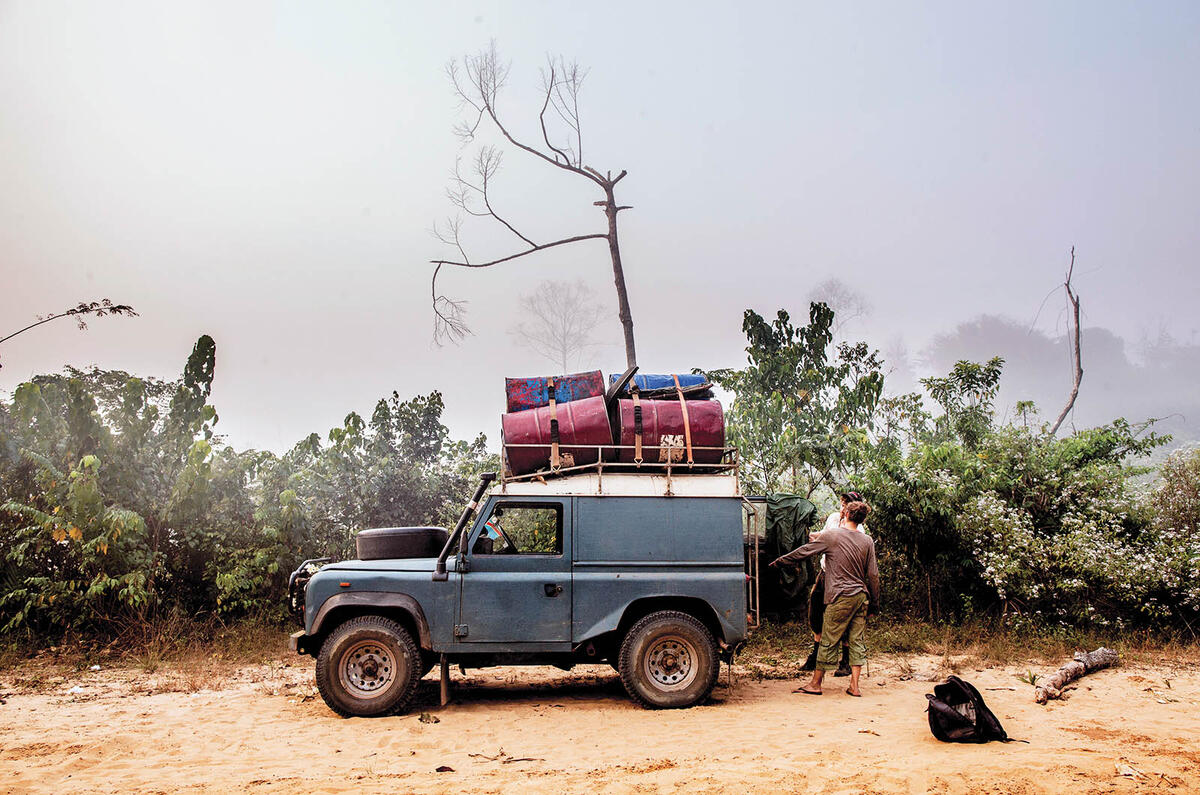

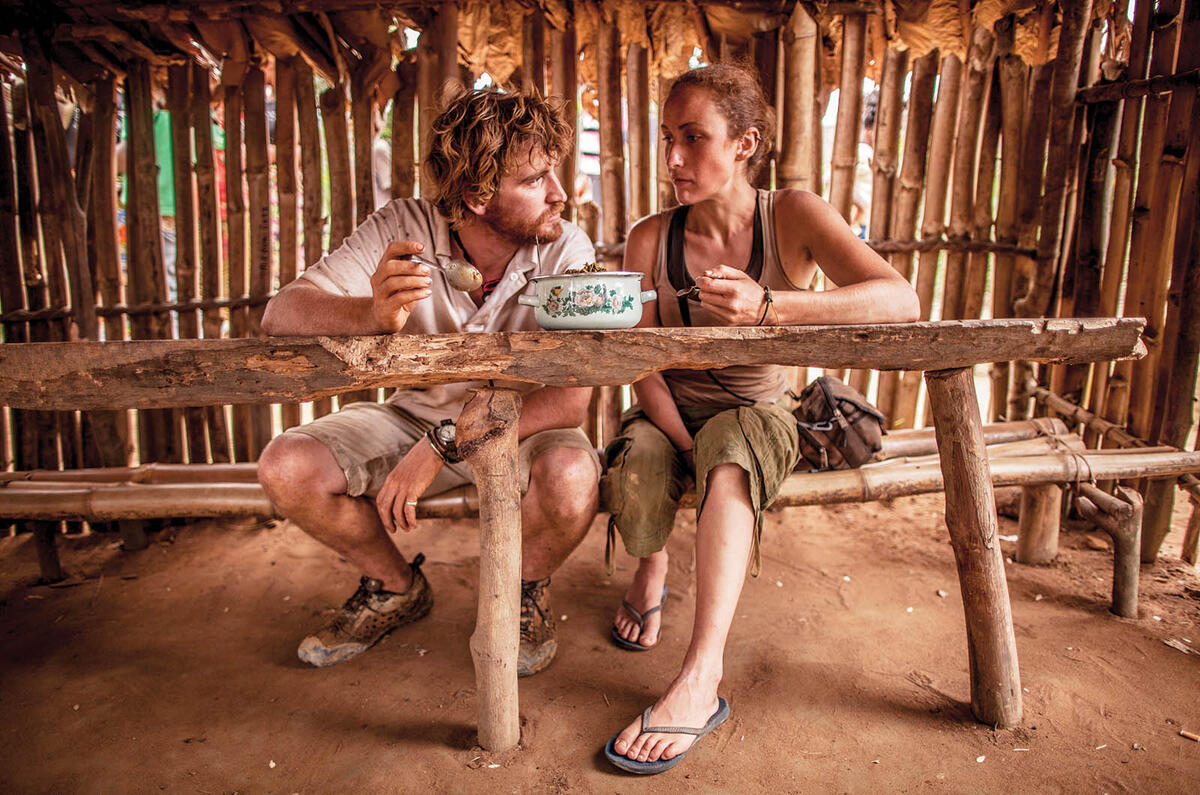
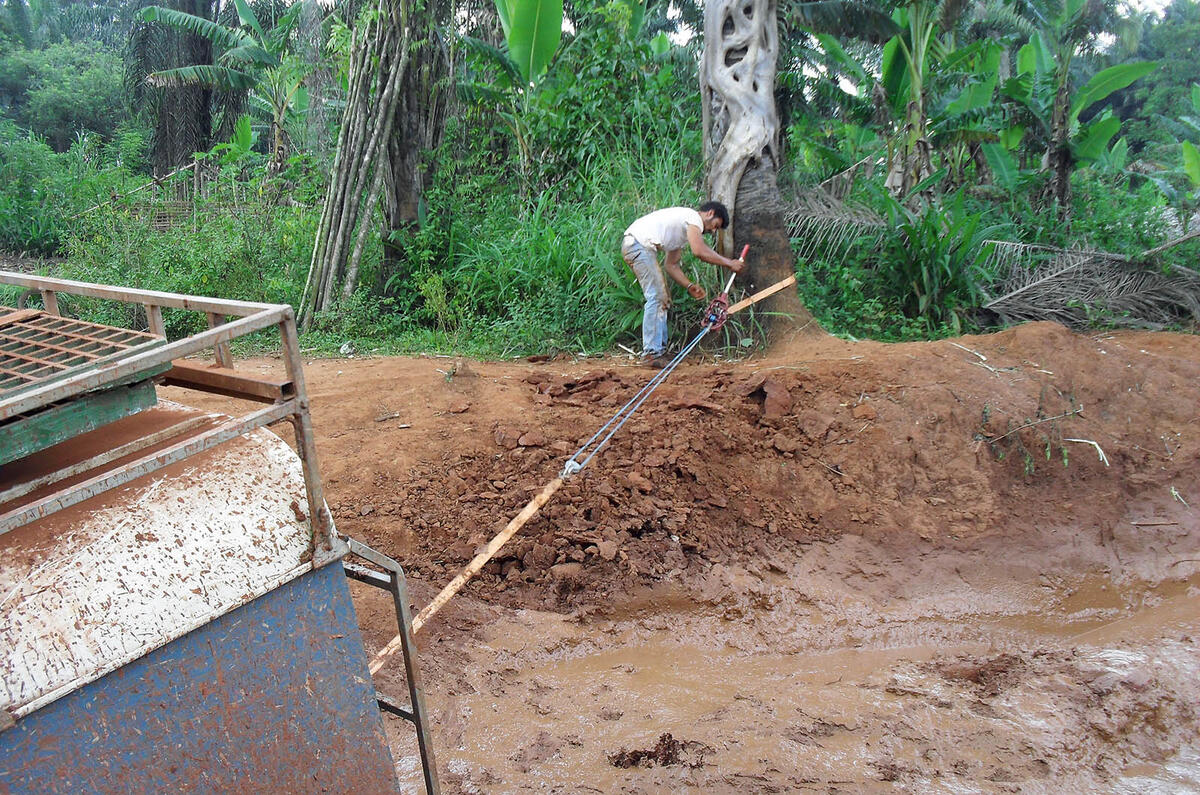
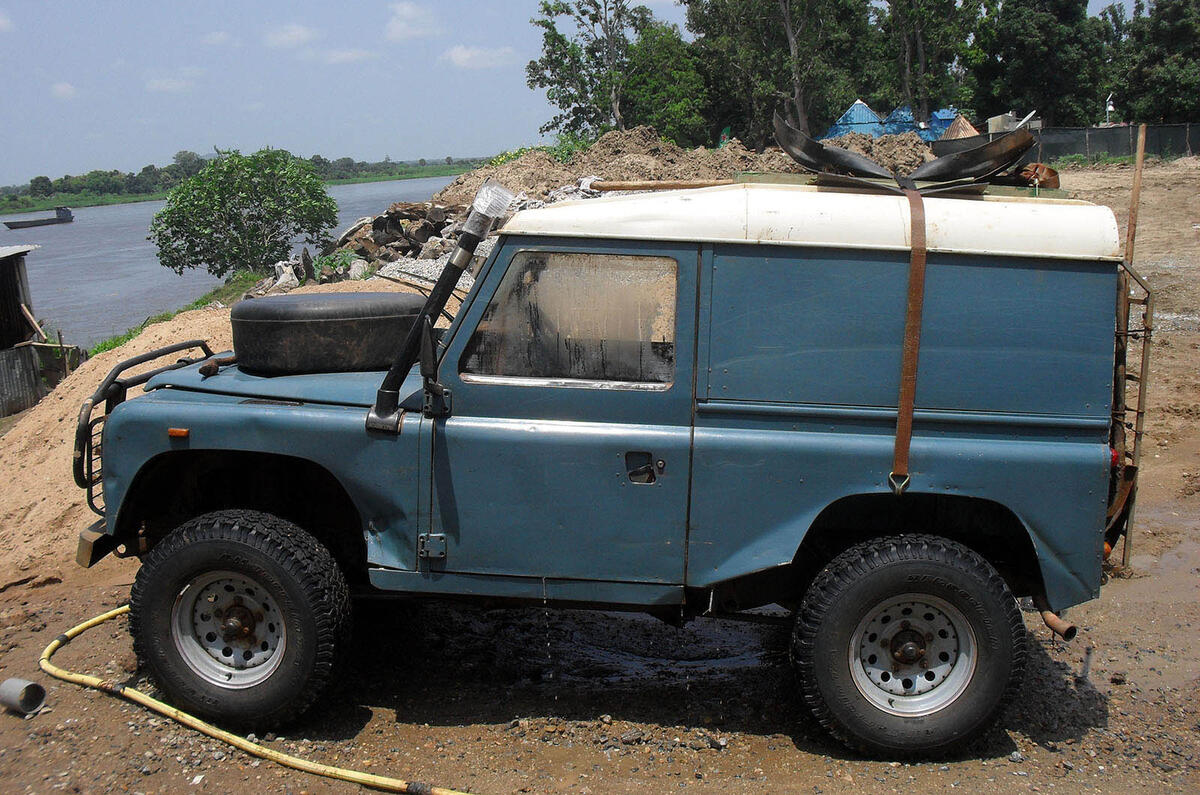
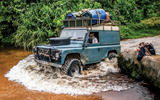

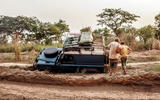
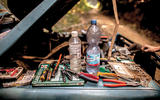
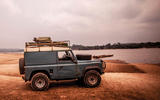

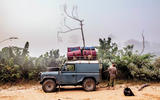
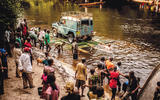
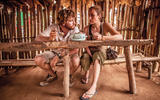

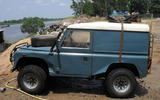


Join the debate
Add your comment
Passe par toute
One thing always bothers me though, why is the air intake snorkel above the driver's head. While the engine may still be running the driver is drowned. Never understood that. In fact I find that somehow disturbing.
Apps?
Great adventure, bonkers mad